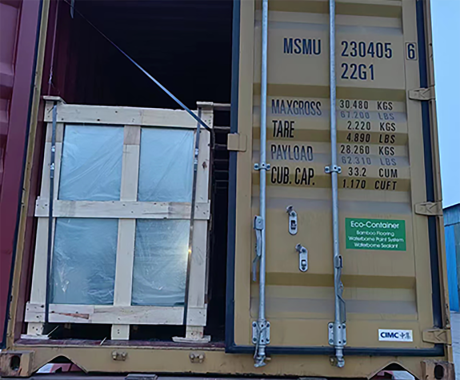

The Rise of Low-E Glass in China A Revolution in Energy Efficiency
In recent years, low-emissivity (low-E) glass has gained significant traction in China as a crucial component in energy-efficient building practices. This advanced glazing technology plays a pivotal role in enhancing thermal performance, reducing energy consumption, and contributing to sustainable architecture. The rapid urbanization and construction boom in the country have catalyzed a surge in the demand for advanced building materials, and low-E glass stands out as a transformative solution.
Understanding Low-E Glass
Low-E glass is coated with a thin layer of metallic oxides that reflect infrared light while allowing visible light to pass through. This unique property enables it to minimize heat transfer between the interior and exterior of buildings. Essentially, low-E glass keeps buildings cooler in the summer and warmer in the winter, resulting in substantial energy savings. Its ability to control solar heat gain makes it an ideal choice for both residential and commercial applications.
The Adoption of Low-E Glass in China
China's drive toward the adoption of low-E glass is largely influenced by the government’s commitment to reducing energy consumption and emissions. The Chinese government has set ambitious targets to decrease carbon intensity and enhance energy efficiency in buildings. As part of this initiative, low-E glass has become a prominent feature in many new construction projects around the country.
Several key factors are accelerating the widespread use of low-E glass in China
1. Regulatory Support The Chinese government has implemented stringent building codes and energy efficiency standards that encourage the use of low-E glass. Incentives and subsidies are also provided for builders and developers who choose to integrate energy-efficient materials into their projects.

2. Environmental Concerns As air quality and environmental degradation become pressing issues, there is an increasing public awareness regarding sustainable building practices. The use of low-E glass helps mitigate the urban heat island effect and reduces overall energy consumption, aligning with environmental goals.
3. Technological Advancements Advances in manufacturing technologies have made low-E glass more affordable and accessible. Chinese manufacturers have invested in modern production facilities, driving down costs and improving the quality of low-E glass products.
4. Increased Market Demand The booming real estate market in China has created a substantial demand for high-performance building materials. Builders and architects are increasingly opting for low-E glass to enhance the aesthetics of their designs while meeting performance criteria.
Challenges and Future Prospects
Despite the rapid adoption of low-E glass, challenges remain. The initial cost of low-E glass can still be higher than traditional glazing solutions, which may deter some builders. Furthermore, there is ongoing debate regarding the long-term durability of low-E coatings under various environmental conditions.
However, the positive outlook for low-E glass in China remains strong. The continuous improvement in production techniques and the increasing awareness of energy sustainability will likely lead to greater acceptance and utilization of low-E technology. Industry experts predict that the market for low-E glass will continue to grow exponentially as more stakeholders recognize its benefits.
Conclusion
Low-E glass represents a significant advancement in energy-efficient building materials, particularly in the context of China’s rapid urbanization and environmental objectives. By providing superior insulation, reducing energy costs, and promoting sustainable building practices, low-E glass is not just a trend but a vital component of the future of construction in China. As the nation moves toward a greener future, the continued evolution and adoption of low-E glass are poised to play a critical role in shaping a sustainable built environment. The commitment of both the government and the industry to raise energy efficiency standards will ensure that low-E glass remains at the forefront of China’s architectural innovations.